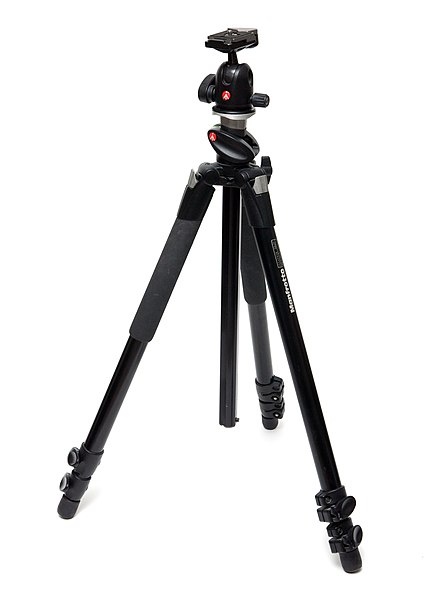In photography, a tripod is a portable device used to support, stabilize and elevate a camera, a flash unit, or other videographic or observational/measuring equipment. All photographic tripods have three legs and a mounting head to couple with a camera. The mounting head usually includes a thumbscrew that mates to a female-threaded receptacle on the camera, as well as a mechanism to be able to rotate and tilt the camera when it is mounted on the tripod. Tripod legs are usually made to telescope, in order to save space when not in use. Tripods are usually made from aluminum, carbon fiber, steel, wood or plastic.
A photographic tripod
Photographers with heavy telephoto lens attachments use a tripod to stabilize their camera to get sharp images
Berlebach Tripod Report 422 made from wood (ash)
A tabletop tripod with a ball head.
A camera is an instrument used to capture and store images and videos, either digitally via an electronic image sensor, or chemically via a light-sensitive material such as photographic film. As a pivotal technology in the fields of photography and videography, cameras have played a significant role in the progression of visual arts, media, entertainment, surveillance, and scientific research. The invention of the camera dates back to the 19th century and has since evolved with advancements in technology, leading to a vast array of types and models in the 21st century.
Leica Camera (1950s)
Hasselblad 500 C/M with Zeiss lens
Different apertures of a lens
The distance range in which objects appear clear and sharp, called depth of field, can be adjusted by many cameras. This allows a photographer to control which objects appear in focus, and which do not.








